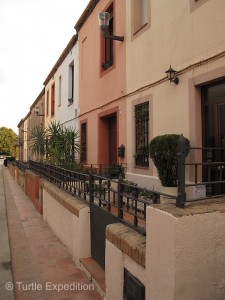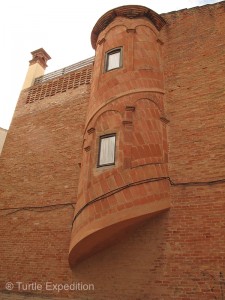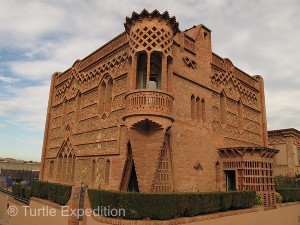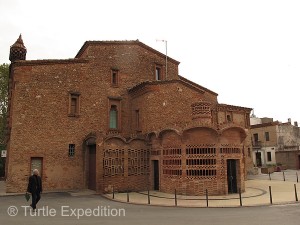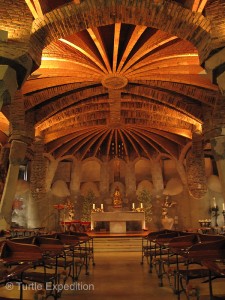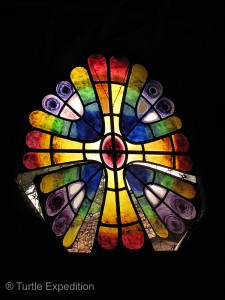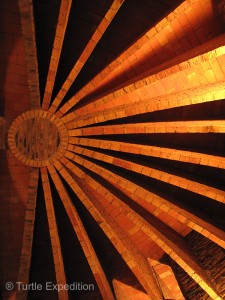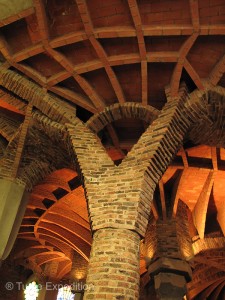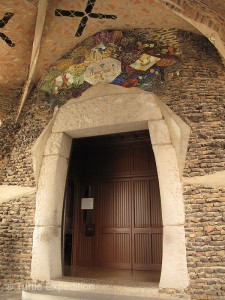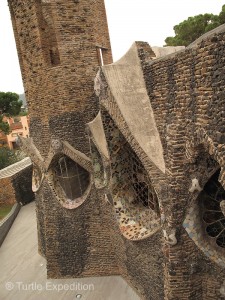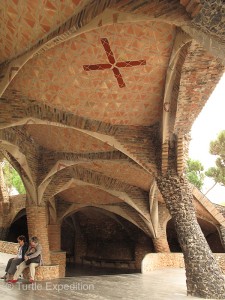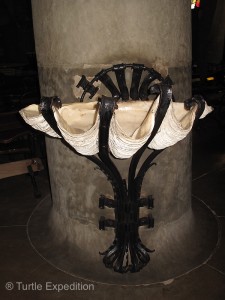Colónia Güell, Catalonia, Spain 11/13
During our visit to St Cirq Lapopie, France, we had met Pablo and Cris, a nice couple from Santa Coloma de Cervelló near Barcelona who invited us to stop by on our way east. They kept insisting the nearby Colónia Güell was a very special place we absolutely had to see.
We found safe parking right in front of their condominium. It seemed that everyone walking by, from 8 to 80, took a picture of the truck. Pablo emailed us later that half the town was talking about our Turtle!
We spent two very enjoyable evenings with them and their friends and did indeed visit the nearby Colónia Güell, a company town founded by leading industrialist Count Eusebi Güell. As a patron of Catalan arts and literature, he hired his friend Antoni Gaudí in 1890 to help him create his vision of a better environment for his textile workers. The factory itself was equipped with the latest technology of that time, and it was famous for velvet and corduroys.
In designing the town, several architects assisted Gaudí but he personally undertook the design of the church.
Only the crypt was finished by the time Count Güell died in 1918 and his sons had no interest in further financing Gaudí’s project. Strolling through the very informative museum, we learned that the crypt incorporated almost all of his architectural innovations which he later utilized designing the Basilica La Sagrada Familia in Barcelona. The crypt is considered a benchmark for studying the architecture of Antoni Gaudí.
La Colónia Güell today is no longer a factory town but many of its inhabitants are descendants of the original workers. As our friends said, it is indeed a very special place and was well worth the visit.
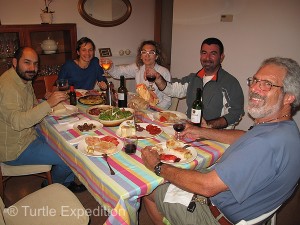
Cris and Pablo (on right) and their friends Gerard and Ciara prepared a typical Catalan dinner for us. It was a lively evening.
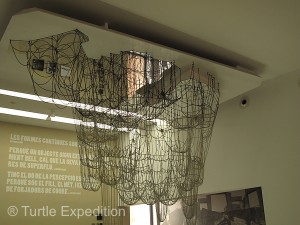
A church born upside down. This is a simplified reproduction of Gaudí’s catenarian model in search of natural shapes for the temple.
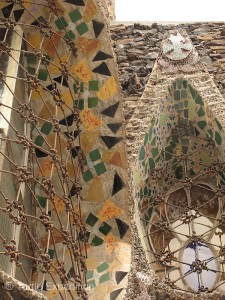
The decorative grates and screens on the windows were recycled sewing needles from the textile factory.
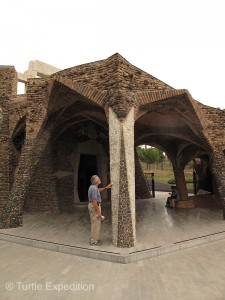
Gaudí chose materials from many different sources including misshaped bricks and slag from a nearby smelter.



